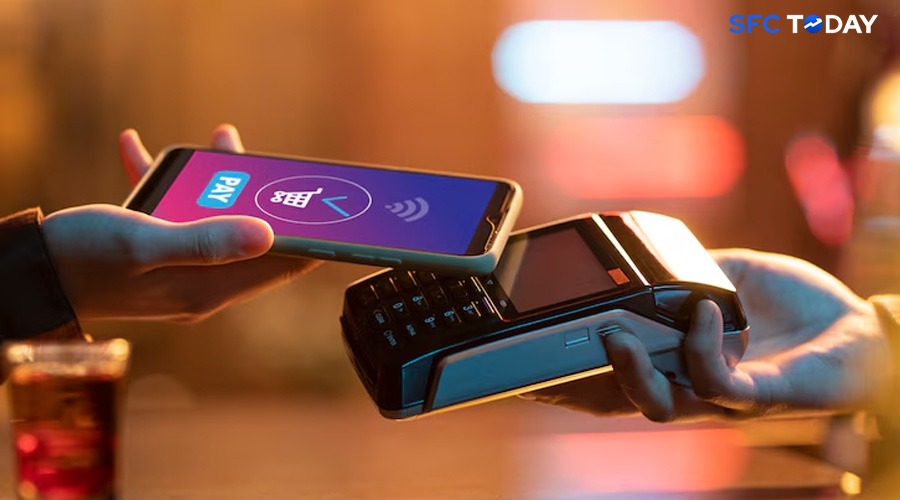Top 10 innovations in crypto payment solutions transforming digital transactions
As cryptocurrencies remain in flux, so are ways to use digital currencies in regular life transactions. Innovations in crypto payment solutions have radically notched up the ways of dealing with and using cryptocurrencies for business and consumers. We bring you the top 10 innovations in crypto payment solutions that are changing the game and shaping new ways for a seamless and secure digital payment ecosystem.
1. Lightning Network
The Lightning Network is one of the most hyped and talked-about innovation possibilities in crypto payment solutions. It not only enables scalability for Bitcoin but also allows doing it with higher speed and less costly transactions by creating off-chain channels. The transactions conducted via the Lightning Network are close to free and nearly instant, making them suitable for microtransactions and everyday purchases. This is a huge, important step for crypto payment technology.
2. Crypto Payment Gateways
Crypto payment gateways are sites that enable a vendor to receive cryptocurrency in exchange for the payment of goods and services. They enable a business to add cryptocurrency payments to its existing checkout process. These payment gateways can allow the payment to be settled in crypto or instantly converted to fiat currency at the time of the transaction. Other popular examples include BitPay and CoinGate. These companies provide merchants with numerous coins and allow for the processing of invoices and automatic settlements.
3. DeFi Payment Solutions
DeFi’s journey in leading cryptos toward payments has become a reality with decentralized financial services. DeFi payment solutions operate smart contracts, which are a type of digital self-performing agreement entered into by two parties based on pre-set conditions. It enables peer-to-peer interactions with no need for third parties. These platforms also offer features like decentralized lending, borrowing, and yield farming, which help users earn interest against their crypto holdings or even secure a loan without having any conventional banking infrastructure. That is quite an innovation in crypto payment solutions.
4. Stablecoins
To easily understand, stablecoins are a type of cryptocurrency designed to have price stability to stable, reserve-backed assets like the US dollar or gold. They assure stable purchasing power by being pegged to a reserve asset designed to give their users a stable medium of exchange and store of value. This solves the very volatility problems common with other cryptocurrencies. This is why digital asset systems using stablecoins such as USDT and USDC are increasingly applied in crypto payments. They are easy and very reliable in the integration of payment systems.
5. Tokenized Assets
Tokenization is the process by which real-world assets are transformed into digital tokens and traded on blockchain platforms. This innovation in payment solutions connected to crypto allows fractional ownership of anything, including real estate, art, or goods. Such tokenized assets enable usage for both payments and investment by allowing liquidity and accessibility to previously illiquid markets. Platforms like RealT and Harbor are pioneering in this.
6. Crypto Debit and Credit Cards
Crypto debit and credit cards are a bridge between regular financial systems and cryptocurrencies. Using these cards, an individual can spend their crypto holdings the same way one would with any merchant that accepts card payments. In the transaction, this cryptocurrency will be changed into fiat currency by the card provider at real-time relevant market rates when users make a payment. Some companies that provide this kind of card are Crypto.com or BitPay, which offers other features along with it, such as cashback rewards and integration with mobile wallets.
7. Compatibility with Traditional Payment Systems
One of the significant discoveries in this regard is the integration of Crypto Payments with traditional payment systems. Since many consumers have adopted the mindset and are prepared to expand cryptocurrencies, they will use the usual retail and e-commerce payment infrastructures. Payment processors, such as Square and PayPal, have backed crypto transactions, and users could make purchases, and sales, and use cryptocurrencies straight away from their accounts.
8. Smart Contract-Based Payment Solutions
Automated agreements are enforceable with the rules embedded in the blockchain—that’s what smart contracts are. Put in other words, a self-executable contract with coded rules to ensure confirmations of releases of payments are made when and only if predefined conditions are met. This innovation in the crypto solution for payment reduces the cost of intermediaries, thus curtailing fraud up to the minimum. Major platforms supporting smart contracts are Ethereum and Binance Smart Chain; they work in various applications that touch on payments.
9. Cross-Border Payment Solutions
Cross-border payments have always come costly and slow, but crypto innovations are geared to change all that. Innovations like Ripple’s XRP are aimed to make international transactions more streamlined, faster, and cheaper. These systems work on blockchain technology, resulting in near-instantaneous transfer compared to other traditional methods of banking, as well as considerably reduced transaction fees.
10. Privacy-Focused Payment Solutions
Privacy remains one big concern for crypto payments. In such light, the innovations that happen where privacy-focused cryptocurrencies like Monero (XMR) and Zcash (ZEC) are concerned are becoming more and more interesting. These are the features emanating from such cryptocurrencies: confidential transactions and stealth addresses, which hinder money information revealed by the users. Now, with these innovations in crypto payment solutions, transactions not only become more anonymous but also more secure.
Conclusion
The landscape of crypto payment solutions is moving quickly toward improvements in speed, security, and functionality. From scalability improvements implemented within the Lightning Network to privacy-oriented cryptocurrencies, each new enhancement makes it easier for people and businesses to integrate digital currencies into daily transactions.
With this technology maturing, we will see further efficiencies and more widespread access to crypto payments. The future of crypto payments can only promise that financial transactions will be both seamless and secure through avenues like better settlement rails, stablecoins, DeFi, and tokenization. For businesses and consumers, knowing the Top 10 Innovations in Crypto Payment Solutions is essential to grasp the complete potential of digital currency.


